
Blue-winged Olives
Baetis
Tiny Baetis mayflies are perhaps the most commonly encountered and imitated by anglers on all American trout streams due to their great abundance, widespread distribution, and trout-friendly emergence habits.
Featured on the forum

This one was surprisingly straightforward to identify. The lack of a sclerite at the base of the lateral hump narrows the field quite a bit, and the other options followed fairly obvious characteristics to Clostoeca, which only has one species, Clostoeca disjuncta.

Troutnut is a project started in 2003 by salmonid ecologist Jason "Troutnut" Neuswanger to help anglers and
fly tyers unabashedly embrace the entomological side of the sport. Learn more about Troutnut or
support the project for an enhanced experience here.
Troutnut on Dec 1, 2007December 1st, 2007, 11:10 am EST
I just came across a neat idea in a paper I'm reading for my research. The paper talks about how being in the middle of a group, as opposed to on the edge, gives prey an advantage in avoiding predators. It closes by acknowledging a situation in which being on the edge may be better, for a different reason.
From Hamilton, W. D. (1971). Geometry for the Selfish Herd. Journal of Theoretical Biology, 31, 295-311.
Some mayflies and other aquatic insects have similar behavior: swarms of males waiting for females to come in and be mated. I've never understood why they always bob up and down and go back and forth in their swarms -- the idea that it's a dance to impress the females isn't terribly convincing. This alternative explanation -- that they all want to be in the swarm, but on the edge of it -- seems like a good one.
I haven't followed up on this at all by checking other literature, etc... I just ran across it and thought it was a neat idea.
From Hamilton, W. D. (1971). Geometry for the Selfish Herd. Journal of Theoretical Biology, 31, 295-311.
However, there are other ways in which selection is likely to favour individuals which are in the nuptial gathering (or at least on its margin) over those that are isolated. Such selection may be sexual; it may work through differences in the chances of obtaining a mate. As one example, consider the swarms of midges that are so common in damp, still, vegetated places in summer. Many species of nematocerous flies have the habit of forming such swarms. Each swarm usually consists of males of a single species and tends to hover in a lixed spot, often near to some conspicuous object. Females come to the swarm and on arrival each is seized by a male. Passing over possible stages in the initiation of such habits, it is at least clear that as soon as proximity to the swarm itself becomes a key to the female’s further co-opera-tion in copulation there is likely to be little chance of mating for the male which does not join the swarm. In such a case the optimal position for a male is probably, not, as it is under predation, at the centre of the throng, and considering how males might endeavour to spend the maximum time in relatively favoured positions, downwind or upwind, above or below, possible explanations for the dancelike motion of such swarms become apparent.
Some mayflies and other aquatic insects have similar behavior: swarms of males waiting for females to come in and be mated. I've never understood why they always bob up and down and go back and forth in their swarms -- the idea that it's a dance to impress the females isn't terribly convincing. This alternative explanation -- that they all want to be in the swarm, but on the edge of it -- seems like a good one.
I haven't followed up on this at all by checking other literature, etc... I just ran across it and thought it was a neat idea.
Jason Neuswanger, Ph.D.
Troutnut and salmonid ecologist
Troutnut and salmonid ecologist
Falsifly on Dec 2, 2007December 2nd, 2007, 5:55 am EST
Jason,
The facts as I understand them are this. (1) The males swarm in a rhythmically up and down fashion. (2) The females fly through the swarm. (3) The female is seized upon from below. From this I will presume the following; Vertical flight is a very efficient means of maintaining a swarms concentration and position. Vertical flight immediately differentiates from the horizontal flight of the female. The ascension phase of the males’ flight offers immediate seizure of the female. Assuming the facts are correct this could be another alternative explanation.
The facts as I understand them are this. (1) The males swarm in a rhythmically up and down fashion. (2) The females fly through the swarm. (3) The female is seized upon from below. From this I will presume the following; Vertical flight is a very efficient means of maintaining a swarms concentration and position. Vertical flight immediately differentiates from the horizontal flight of the female. The ascension phase of the males’ flight offers immediate seizure of the female. Assuming the facts are correct this could be another alternative explanation.
Falsifly
When asked what I just caught that monster on I showed him. He put on his magnifiers and said, "I can't believe they can see that."
When asked what I just caught that monster on I showed him. He put on his magnifiers and said, "I can't believe they can see that."
Flybyknight on Dec 2, 2007December 2nd, 2007, 10:21 am EST
I do not have an explanation to offer,
except that I never cease to marvel at
the beauty of the dance.
Dick
except that I never cease to marvel at
the beauty of the dance.
Dick
Lightly on the dimpling eddy fling;
the hypocritic fly's unruffled wing.
Thomas Scott
the hypocritic fly's unruffled wing.
Thomas Scott
Mcjames on Dec 4, 2007December 4th, 2007, 7:01 am EST
Flybyknight that is getting dangerously close to a haiku
I am haunted by waters
Flybyknight on Dec 4, 2007December 4th, 2007, 12:43 pm EST
JHM,
Its a religious experience.
Cheers,
Dick
Its a religious experience.
Cheers,
Dick
Lightly on the dimpling eddy fling;
the hypocritic fly's unruffled wing.
Thomas Scott
the hypocritic fly's unruffled wing.
Thomas Scott
Martinlf on Dec 5, 2007December 5th, 2007, 5:37 pm EST
Yeah, McJames, Jason may be watching. Flyby, don't shorten those lines down too much.
"He spread them a yard and a half. 'And every one that got away is this big.'"
--Fred Chappell
--Fred Chappell
Quick Reply
Related Discussions
Topic
Replies
Last Reply
9
Jan 14, 2011
by PaulRoberts
by PaulRoberts
8
Jan 7, 2009
by Dgracia
by Dgracia
Re: Anafroptilum bifurcatum nymphs (formerly Centroptilum bifurcatum) 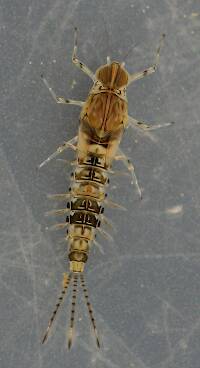
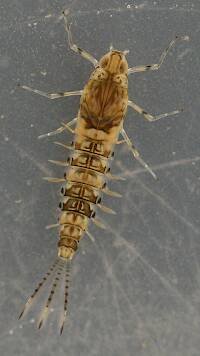
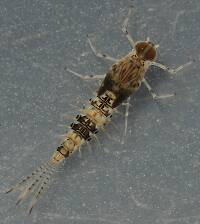
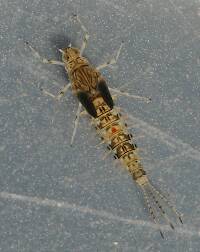
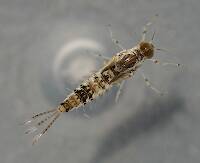
In the Photography Board by Millcreek
+ 1





In the Photography Board by Millcreek
4
Jul 28, 2014
by Millcreek
by Millcreek
32
Jul 17, 2007
by Shawnny3
by Shawnny3
1
Sep 21, 2008
by GONZO
by GONZO
9
Apr 30, 2013
by Oldredbarn
by Oldredbarn




